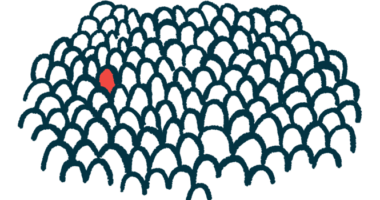12 new SERPING1 gene mutations tied to HAE discovered in Slovakia
Country appears to have more disease cases than other European nations

A dozen new mutations in the SERPING1 gene were identified in Slovakia as the cause of hereditary angioedema (HAE) due to C1-inhibitor deficiency or dysfunction — known as C1-INH-HAE — according to a new study based on a complex analysis.
That genetic analysis also suggested that the prevalence of HAE in Slovakia is higher than that seen in other European countries. A disease’s prevalence is the number of cases present in a population during a particular period in time.
“The identification of 12 previously unreported variants in [the] SERPING1 gene could contribute to the current genetic databases and enlarge the understanding of the genetic background of C1-INH-HAE and help in the diagnostic approach in the patients with suspected HAE,” the researchers wrote.
The study, “Complex analysis of the national Hereditary angioedema cohort in Slovakia – Identification of 12 novel variants in SERPING1 gene,” was published in the World Allergy Organization Journal.
1st ‘complex’ analysis in country uncovers a dozen SERPING1 gene variants
Mutations in the SERPING1 gene, which carries instructions for making the C1-INH protein, are the chief cause of HAE, which is estimated to affect one in 50,000 to 150,000 individuals globally.
C1-INH-HAE comprises both HAE types 1 and 2. Type 1 is caused by a deficiency in C1-INH, while type 2 occurs as a result of the protein’s dysfunction. The lack or malfunction of the protein ultimately leads to the overproduction of a signaling molecule called bradykinin, which is believed to act as the driver of the recurrent episodes of swelling that characterize HAE.
Now, a team led by physicians at the University Hospital in Martin, in Slovakia, described the results of what they called “the first complex analysis” of HAE patients in their country.
Patients were recruited from a national survey conducted in Slovakia. The majority were followed at the National Centre for Hereditary Angioedema in the University Teaching Hospital, in Martin.
In all, the analysis involved 132 patients diagnosed with HAE. Among them were 56 males and 76 females, comprised of 112 adults and 20 children. Of them, 51 were index cases, meaning they were the first documented case of HAE in their family. These index cases were identified in 32 families.
C1-INH-HAE type 1 was diagnosed in 117 patients and C1-INH-HAE type 2 in the remaining 15. Deceased patients were excluded from the analysis and no patient died during follow-up.
A genetic analysis revealed the presence of 22 unique disease-causing mutations in the SERPING1 gene in 26 index cases. More than half of these mutations — a total of 12 — had never been reported and were found in 13 index cases, representing 54.6% of the identified mutations. No genetic analysis was conducted in 44 patients due to their low compliance with care and clinical management.
Disease-causing mutations were identified in 72 of the 88 patients tested, or about 82% of the individuals in the study. Nearly a third of them (30.1%) had no family history of HAE. All mutations were heterozygous, meaning they were only present in one of the copies of the gene.
HAE prevalence in Slovakia estimated at 1 case per 41,280 inhabitants
In index cases, frameshift and missense variants were the most common, each found in 34.6%, followed by gross deletions, which were seen in 11.5%. Frameshift mutations change the way a gene’s DNA sequence is read, while missense mutations lead to a switch of an amino acid — the building blocks of proteins — in the resulting protein. Gross deletions occur when portions of a gene are eliminated.
Complete deletion of the SERPING1 gene was linked to a severe disease course: Patients started experiencing symptoms from the ages of 1-5, and had eight to 27 attacks per year, with some of the attacks affecting the larynx, or voice box.
A new gross deletion identified in a large family also was associated with a poor disease course, with patients starting to experience symptoms early in life (from 2 to 8 years old), and having 10-25 attacks per year that could also affect the larynx.
Conversely, missense mutations were linked to a milder disease course, with patients experiencing one to two attacks per year, which didn’t affect the larynx. Symptom onset in these patients occurred between the ages of 3 and 21.
With a country population of 5,449,270 inhabitants in 2021, the prevalence of HAE in Slovakia was also estimated in this study to be one case per 41,280 inhabitants which is “higher in comparison to data from other European countries,” the team wrote. That rate also was higher than the average calculated prevalence.








